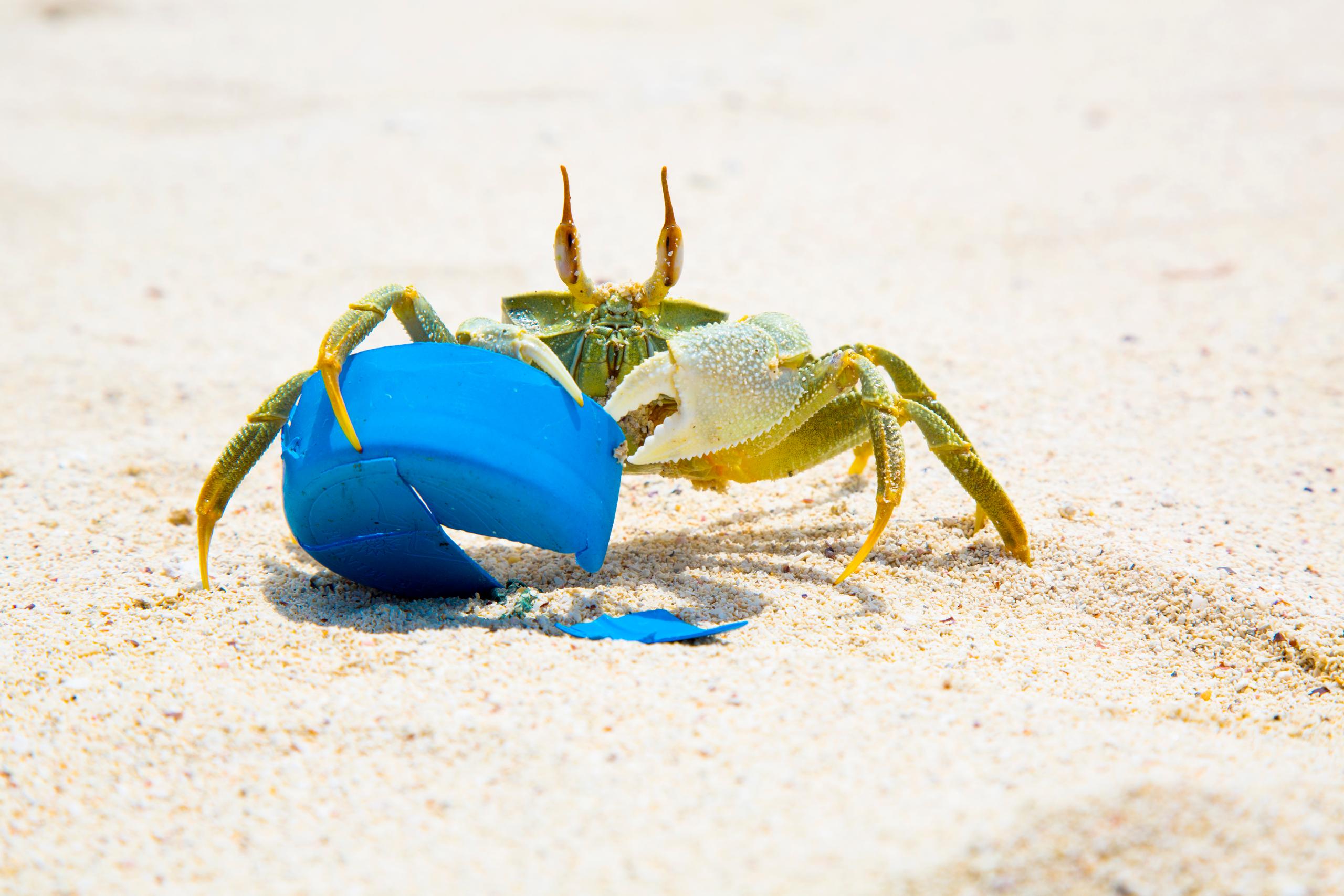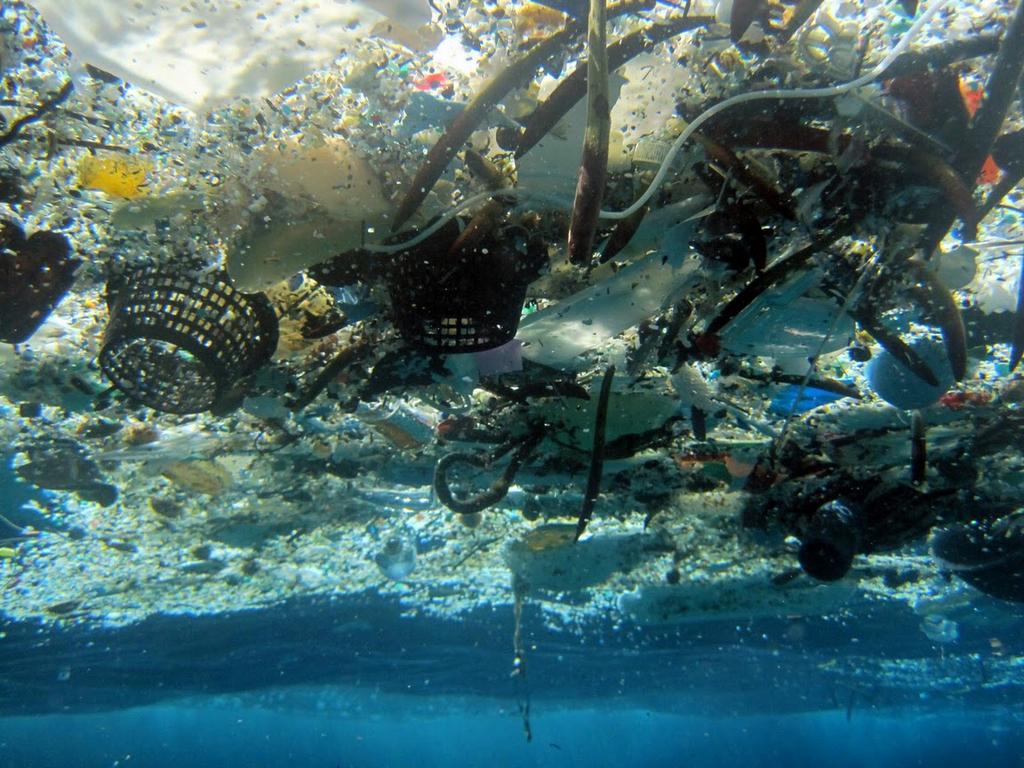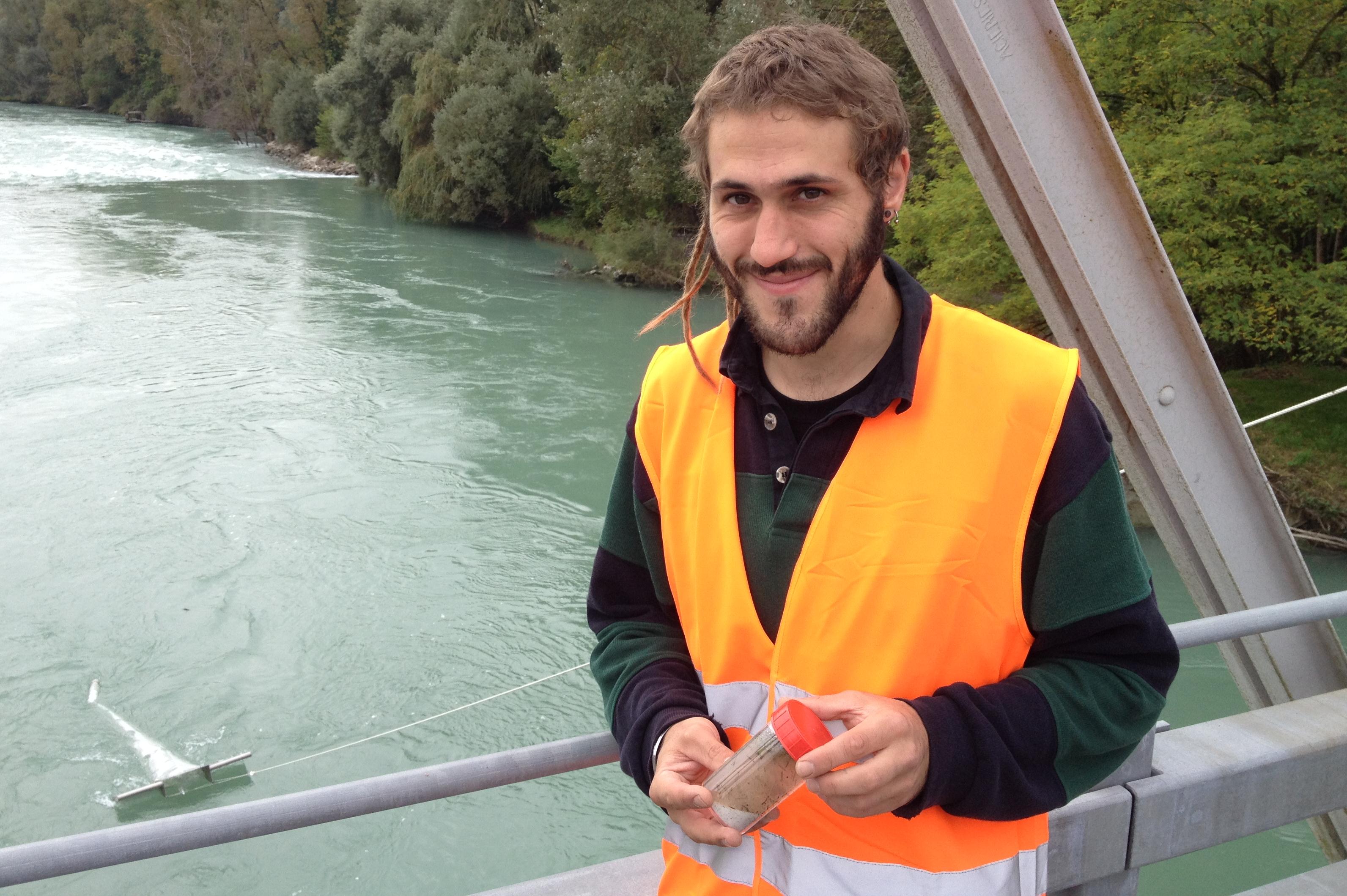Debris ahoy! Transforming ocean plastic into energy

After completing their around-the-world research trip into plastic pollution, the Swiss-based Race for Water Foundation has given a preview into its findings and argued why large-scale clean-ups are unrealistic. Its answer? Turn that waste into electricity.
“We face a disastrous situation,” the foundation president, Marco Simeoni, told reporters in Lausanne on Tuesday. “As the World Economic Forum recently reportedExternal link, if we don’t do anything, by 2050 in terms of weight there will be more plastic than fish in our oceans.”
The amount of plastic being produced annually continues to rise exponentially – from 15 million tonnes (MT) in 1964 to 311 MT in 2014. It is estimated that over five trillion pieces of plasticExternal link are floating in the world’s oceans, causing damage throughout the food chainExternal link.
Last year his foundation External linkcompleted a 300-day research expedition called the Race for Water Odyssey crossing the Atlantic, Pacific and Indian oceans to study the problem. This was the first major look at five areas known as “gyres”, where waste accumulates in large quantities, and the impact of pollution for island populations.
The six-member crew visited 15 island beaches and followed standard techniques for collecting plastic samples. These were sent to Lausanne’s Federal Institute of Technology (EPFL)External link, the University of Bordeaux and the School of Engineering and Architecture of Fribourg for analysis.
A final scientific report will be published this summer but preliminary findings released on Tuesday show that plastic pollution – both macro (>2.5cm) and micro (<5mm) debris – is widespread.
“In some places you have the impression you are walking on a rubbish tip,” said Simeoni, adding that around 80% of macro debris collected had been chewed by fish or turtles.
Pollution levels varied according to the location: from 26 large pieces of macro plastic (such as bottles, caps or toothbrushes) found on a 10m2 stretch of beach on Easter Island in the Pacific to up to 162 pieces on a similar sized area on Hawaii’s Big Island.
The quantity of tiny microplastics found on beaches also differed. Researchers filled one 180ml container with pieces found on a 50cm2 section of beach on Rodrigues Island in the Indian Ocean, but packed nine containers from a similar sized area on Big Island.
Capturing plastic
Race for Water is not alone. A number of major initiatives have been launched to try to clean up ocean waste.
The press have been closely following 21-year-old Boyan SlatExternal link, the founder of the Ocean Cleanup organisation, and his plans to install a 100-metre floating barrier in the North Sea, 23km off the Netherlands.
He hopes this test barrier, which will be launched in the next few months, will capture and concentrate plastic debris that can be removed and later recycled. A full project is planned later this year off the Japanese island of Tsushima. His ultimate goal is to deploy a 100km boom by 2020 to try to clear half of the so-called “Great Pacific Garbage Patch” of plastic debris within ten years.
First cleanup barrier test to be deployed in Dutch waters: https://t.co/2R22dIwoSvExternal link pic.twitter.com/awGFT8EpWWExternal link
— The Ocean Cleanup (@TheOceanCleanup) December 30, 2015External link
Elsewhere, inventors from England are developing the SeaVax External link– a solar- and wind-powered ship that they say can suck up and store 150 tons of plastic waste.
Simeoni, however, is dubious about large-scale ocean clean-ups, which he calls “unrealistic”.
“Much of the waste is under the water,” he said. “You can’t collect the microplastics which are scattered everywhere and carried by the currents. And in the gyres, it is 1,000-5,000m deep so you can’t anchor any machines. The cost would be too high and with only a feeble result.”
His foundation is convinced that once a plastic object enters the ocean it is too late. The challenge, he says, is to act on land close to the source so that the plastic doesn’t enter the water and to find a way of making all plastic waste valuable so that it can be recycled.
Energy source
In big cities around the world, unemployed people collect rubbish (glass, aluminium, iron and paper, and in some places recyclable plastic bottles) for cash. So why not all plastic waste?
The foundation believes it has found a cost-effective business model that would pay people to collect plastic that can be transformed into clean electricity.
It is in talks with an unnamed firm, which has been developing ultra-high temperature hydrolysis (gasification) processes. The company has prototype units with reactors that burn waste at 1,200-1,400 degrees Celsius without oxygen. At these high temperatures, plastic is transformed instantly into synthetic gas, or syngas – a mixture of mostly hydrogen, as well as carbon monoxide and carbon dioxide. The combustible syngas could then be used to drive turbines and create electricity.
“A five-tonne unit can transform 1,680 tonnes of plastic waste a year into 3,500 megawatt hours of energy. That’s easily enough to cover the electricity needs of 2,000 islanders’ homes,” said Simeoni.
Other advantages are that all plastic can be burnt together, rather than having to be separated and cleaned, and there are no toxic emissions.
The firm has designed a five-tonne and a 25-tonne unit and is currently in the production phase. If all goes to plan, the foundation hopes to use the technology to start a pilot project on Easter Island at the end of 2016. The idea could then be expanded to other islands and eventually to coastal cities – the main sources of ocean pollution.
However, there are many hurdles to cross. Simeoni admits that this complex new technology is not yet 100% reliable. And there is another major issue – money.
“We need to mobilise people, raise awareness and change behaviours but it’s not an easy mission,” he said. “We are also trying to get sponsors and donors but that’s not an easy subject either. It’s not very appealing to talk about rubbish and pollution.”

In compliance with the JTI standards
More: SWI swissinfo.ch certified by the Journalism Trust Initiative













You can find an overview of ongoing debates with our journalists here . Please join us!
If you want to start a conversation about a topic raised in this article or want to report factual errors, email us at english@swissinfo.ch.